With all the jazz boxed sets that have come out in recent years - the complete Miles Davis on Columbia, the complete Charlie Parker on Savoy, the complete Duke Ellington on RCA and so on - it’s hard to believe any significant tapes by any major musician might still be languishing undiscovered in a record company’s archives.
Yet Verve has just released “Twelve Nights in Hollywood,” a four-CD set of Ella Fitzgerald singing 76 songs at the Crescendo, a small jazz club in Los Angeles, in 1961 and ‘62 - and none of it has ever been released until now.
These aren’t bootlegs; the CDs were mastered from the original tapes, which were produced by Norman Granz, Verve’s founder and Fitzgerald’s longtime manager.
They capture the singer in her peak years and at top form: more relaxed, swinging and adventurous, across a wider span of rhythms and moods, than on the dozens of albums that were released in her lifetime.
Richard Seidel, the producer of the boxed set, first heard the tapes early this year. He was driving to Massachusetts from his home in New Jersey and brought along some rough CD transfers to play in the car.
“I was feeling kind of down that day,” he recalled, “and the more I listened, I could not help but start to smile. I’ve worked on dozens of Ella projects over the years, but there was something different about this one - the sheer rhythmic joy she projects, the endlessly inventive improvising.”
There’s nothing rare about a joyous Ella Fitzgerald recording; the woman exuded joy in nearly every note she sang. Yet the level on these sessions soared higher and plumbed deeper.
Gary Giddins, the veteran critic and author of “Jazz,” agrees. “This ranks on the top shelf of her live recordings,” he said. “It’s about as good as it gets.”
The 1961 Crescendo gig, from May 11-21 (followed by a repeat visit the next year), was booked as an afterthought, a time filler between a European tour that Fitzgerald and her quartet had begun in February and a monthlong stay at the Basin Street East in New York in June. Mr. Granz took the unusual step of taping every set. But in the next year alone he and Fitzgerald recorded six studio albums, including two of her eight heavily promoted songbook albums, each devoted to standards by a prominent American composer. In this context it’s not so surprising that the Crescendo tapes received short shrift.
Mr. Granz did choose 12 tracks from the roughly 14 hours of material recorded at the Crescendo and released them as an LP called “Ella in Hollywood.” But the album didn’t do well, perhaps because it sounded so strange. In between the songs, for reasons now unknown, someone spliced in loud applause that had been recorded in a large concert hall, making the whole album seem artificial. (The Crescendo was a nightclub of 200 seats.)
Whatever the reasons for the flat reviews and scant sales, the executives of Verve - which Mr. Granz had sold to MGM in 1960 - put the Crescendo tapes in the vault, where they were forgotten for years.
In 2008, Mr. Seidel, who had been the head of Verve from 1982 to 2002, signing nearly all its jazz artists and producing most of their albums, met with the label’s general manager, Nate Herr, and proposed taking a listen to the tapes with an eye toward releasing them. He knew it was a long shot. But Mr. Herr was game.
A few months later the company’s engineers sent Mr. Seidel CD copies of the tapes. He set out on his trip to Massachusetts, listening as he drove, and he realized he simply had to get the music released. “There was an intimacy and poignance about them,” he recalled thinking about the tapes, “that seemed to be brought out by the atmosphere of a small club.”
Remarkably, with the exception of “Ella in Hollywood” and “Live at Mr. Kelly’s,” a 1958 Chicago date (which wasn’t released until 2007), there are no Fitzgerald albums recorded live in a small club.
“Twelve Nights in Hollywood” is not a complete document (if it were, it would consist of more than a dozen CDs, not four). But it does include what Mr. Seidel regards as the best version of nearly every song - 76 out of 83 - that Fitzgerald sang on those nights.
The jazz legend at
her peak, in a relaxed
and intimate mood.
The blues were never Fitzgerald’s strong point; her few attempts at singing them in the studio came off as lame because it was hard to believe she had the capacity to be sad. But on these recordings she sings several blues songs, most notably “St. Louis Blues,” and, while no one would mistake her for Billie Holiday, she takes them for a bumpy, saucy ride.
When she scats on these recordings, she goes higher, lower, faster, more syncopated and more harmonically complex than usual; it sounds like a really good bebop horn solo, not an affectation, as her scatting on studio albums sometimes does.
And on ballads, she takes the melody in more - and more inventive - directions while still making it at least as heartbreaking as she ever did in a studio or large concert hall. The photographer Herman Leonard once took a picture of Duke Ellington sitting at a front-row table in a small New York nightclub, beaming at Fitzgerald while she sang. More than any other album, “Twelve Nights in Hollywood” gives us an idea of what Ellington was smiling at.
스마터리빙
more [ 건강]
[ 건강]이제 혈관 건강도 챙기자!
[현대해운]우리 눈에 보이지 않기 때문에 혈관 건강을 챙기는 것은 결코 쉽지 않은데요. 여러분은 혈관 건강을 유지하기 위해 어떤 노력을 하시나요?
 [ 건강]
[ 건강]내 몸이 건강해지는 과일궁합
 [ 라이프]
[ 라이프]벌레야 물럿거라! 천연 해충제 만들기
 [ 건강]
[ 건강]혈압 낮추는데 좋은 식품
[현대해운]혈관 건강은 주로 노화가 진행되면서 지켜야 할 문제라고 인식되어 왔습니다. 최근 생활 패턴과 식생활의 변화로 혈관의 노화 진행이 빨라지고
사람·사람들
more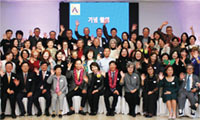
[송년행사 화보] “한 해를 마무리하며… 화기애애한 송년의 순간들”
LA 러너스클럽LA 러너스클럽(회장 김두병)은 13일 작가의 집에서 80여명의 회원과 가족이 참석한 가운데 송년회를 마쳤다. 2007년 창립된…
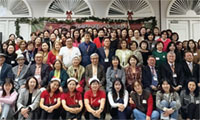
[송년행사 화보] “웃음과 감사 가득 ‘훈훈’… 함께해서 행복”
한국학교총연합회미주한국학교총연합회(회장 이영숙)가 주최한 제43회 장기 근속교사 포상 및 송년의 밤 행사가 140여명의 교사들이 참석한 가운데…
[송년행사 화보] “친구야 반갑다… 선배님들 모두…
경남중고경남중·고등학교 남가주 동창회(회장 예해덕)는 지난 6일 송년회를 열고 동문 및 가족 60여 명이 참석한 가운데 끈끈한 우정을 확인했다…
송년행사 게시판
월남전 참전자회월남전 참전자회 캘리포니아지회(회장 김종식)가 오는 17일(수) 오전 11시 LA 한인타운 해피음악원(2426 W. 8th St…
[송년행사 화보] “올 한 해 보람 가득… 내년에…
서강대남가주 서강대 동문회(회장 이정은·이사장 이찬근)의 2025년 정기총회 및 송년의 밤 행사가 지난 6일 웨스트리지 골프클럽에서 열렸다. …
많이 본 기사
- ‘통일교 1억’ 권성동 징역 4년 구형… “종교결탁, 헌법가치 훼손”
- “’트럼프 눈독’ 파나마항 매각, 더 큰 중국 암초 만났다”
- 김건희특검, ‘로저비비에’ 국힘 김기현 압수수색…피의자 입건
- 방미 위성락 안보실장, 루비오와 회동… 1
- 경찰, 한학자 접견조사 시도…천정궁 출입기록·회계 분석 속도
- “매장 냉동고에 알몸 상태 여의사 시신 발견”…상상도 못 했다, 무슨일?
- “美日, 5천억 달러대 투자펀드 첫 … 1
- 머스크, 내년 중간선거 앞두고 공화당에 정치자금 지원 재개
- ‘유례없는 홍수’ 워싱턴주서 차량 침수돼 운전자 사망
- 트럼프 “베네수정권, 테러단체지정…오가는 제재대상 유조선 봉쇄”
- 호주 총격범과 몸싸움 끝에 숨진 60대 부부…유족 “자랑스러워”
- 강경화 대사, 트럼프에 신임장 제정…트럼프, 李대통령 안부 물어
- 트럼프 “CBS 더 나빠져” 파라마운트에 불만…워너 인수전에 영향?
- 마지막 페니…올해 찍은 1센트 동전 232세트 1천676만 달러에 팔려
- “내가 먼저 죽으면 어머니 간병은… “79세 아들, 100세 노모 살해 뒤 남긴 말
- 트럼프 “17일 밤 대국민연설”…지지율 하락 속 메시지 주목
- 현대차·기아, 美서 400만대에 도난 방지 장치 추가 합의
- 트럼프 “난 술 안 마시나 마셨으면 중독됐을 가능성 높아”
- “그동안 감사” 피아니스트 임동혁, 극단 선택 암시글에 경찰 출동
- ‘단골 손님’ 박나래·이이경은 없었다..MBC 연예대상, ‘베스트커플상’ 후보 6팀
- 김건희특검, ‘로저비비에 선물’ 김기현 자택 압수수색
- 美, 시리아·남수단 등 5개국 전면 입국 금지 대상에 추가
- 백악관 비서실장 “관세 정책에 엄청난 내부 이견 있었다”
- 김하성 ATL과 전격 계약 ‘1년 2000만$’ 도장! 결국 FA 재수 선택→내년에 초대박 도전한다
- 미 전국서 50세 이상 살기 좋은 곳
- 뉴욕증시, 흔들리는 고용·소비에 경계심 고조 …혼조 마감
- 박찬욱 ‘어쩔수가없다’, 아카데미 국제영화상 예비후보
- 무역대표부, EU의 빅테크 때리기에 “상응조치” 보복 경고
- 캘리포니아 플라스틱백 퇴출 앞두고… 대형 체인, 종이봉투로 속속 전환
- ‘中 신장위구르 인권침해’ 폭로한 중국인, 미국서 추방 위기
- 고용시장 얼린 ‘셧다운 한파’…11월 실업률 4년來 최고
- 송미숙 뉴저지한인회장 선출
- ‘尹 관저이전 특혜’ 김오진 前국토차관 구속… “증거인멸 염려”
- “얼굴 망가지면 다른 남자 못 만날 것”…태국인 아내에 끓는 물 부은 한국 남성
- 슬기로운시니어생활 45회
- 여성운동가들에 거친 욕설 마크롱 부인, ‘어정쩡한’ 사과
- 워싱턴 일원 유대인 커뮤니티 ‘비상’
- “뜨거운 음료 사 와서, 후배 때려”..팝핀현준 ‘폭행 미투’ 터졌다
- “피고소만 5건” 박나래 ‘주사이모’ 고발 건, 검찰서 경찰로 이첩..왜?
- 해싯 “트럼프, ‘친한 사람 연준의장 부적격’ 의견 거부할 것”
- 한국, 월드컵 대비 ‘강팀 평가전’ 사실상 무산... 3월 한 경기 ‘피파랭킹 24위’ 오스트리아 유력
- VA 맥클린 일대 주택 털려던 절도범 붙잡혀
- 노인 가장 살기 좋은 전국 중소도시 NJ 클립사이드팍 1위·포트리 2위
- 테슬라 주가, 또 3% 올라 사상 최고치 경신…사흘째 ‘랠리’
- ‘폭행·납치 피해자’ 100만 유튜버 “우울하기엔 내 인생 아까워..복귀”
- 미 상이군인 재단에 1만1,000달러 전달
- “날씨는 춥고 일자리는 없네요”
- 25년이상 운영‘식당’에 세제혜택 추진
- 박미선, 유방암 투병 중 ‘日 지진’ 걱정.. “건강하셔야 한다”
- FIFA, 북중미 월드컵 최저가 60달러 입장권 발매…폭리 비판에 대응
1/5지식톡

-
 ☝️해외에서도 가능한 한국어 선생님…
0
☝️해외에서도 가능한 한국어 선생님…
0이 영상 하나면 충분합니다!♥️상담신청문의♥️☝️ 문의 폭주로 '선착순 상담'만 진행합니다.☎️ : 02-6213-9094✨카카오톡ID : @GOODEDU77 (@골뱅이 꼭 붙여주셔야합니다…
-
 테슬라 자동차 시트커버 장착
0
테슬라 자동차 시트커버 장착
0테슬라 시트커버, 사놓고 아직 못 씌우셨죠?장착이 생각보다 쉽지 않습니다.20년 경력 전문가에게 맡기세요 — 깔끔하고 딱 맞게 장착해드립니다!장착비용:앞좌석: $40뒷좌석: $60앞·뒷좌석 …
-
 식당용 부탄가스
0
식당용 부탄가스
0식당용 부탄가스 홀세일 합니다 로스앤젤레스 다운타운 픽업 가능 안녕 하세요?강아지 & 고양이 모든 애완동물 / 반려동물 식품 & 모든 애완동물/반려동물 관련 제품들 전문적으로 홀세일/취급하는 회사 입니다 100% …
-
 ACSL 국제 컴퓨터 과학 대회, …
0
ACSL 국제 컴퓨터 과학 대회, …
0웹사이트 : www.eduspot.co.kr 카카오톡 상담하기 : https://pf.kakao.com/_BEQWxb블로그 : https://blog.naver.com/eduspotmain안녕하세요, 에듀스팟입니다…
-
 바디프렌드 안마의자 창고 리퍼브 세…
0
바디프렌드 안마의자 창고 리퍼브 세…
0거의 새제품급 리퍼브 안마의자 대방출 한다고 합니다!8월 23일(토)…24일(일) 단 이틀!특가 판매가Famille: $500 ~ $1,000Falcon: $1,500 ~ $2,500픽업 & 배송직접 픽업 가능LA…
케이타운 1번가
오피니언
 노세희 부국장대우·사회부장
노세희 부국장대우·사회부장 커뮤니티 재단과 한인사회의 미래
 민경훈 논설위원
민경훈 논설위원햄닛과 햄릿, 그 죽음에 대한 명상
 한형석 사회부 부장대우
한형석 사회부 부장대우 연말, 사기범들의 최대 성수기
 정유환 수필가
정유환 수필가 [화요칼럼] 크리스마스 트리의 추억
 이영창 / 한국일보
이영창 / 한국일보 [지평선] 대통령의 ‘디테일’ 욕심
 이생진
이생진 ‘벌레 먹은 나뭇잎’
 옥세철 논설위원
옥세철 논설위원오늘의 베네수엘라가 내일의 동아시아국가…

퇴조의 핑크 타이드
 조지 F·윌 워싱턴포스트 칼럼니스트
조지 F·윌 워싱턴포스트 칼럼니스트 [조지 F. 윌 칼럼] 대통령의 전쟁수행권
1/3지사별 뉴스

송미숙 뉴저지한인회장 선출
32대 뉴저지한인회장에 송미숙 전 뉴저지한인회 이사장이 선출됐다.뉴저지한인회선거관리위원회는 15일 선관위 사무실에서 32대 회장선거에 단독 입…
25년이상 운영‘식당’에 세제혜택 추진

워싱턴 일원 유대인 커뮤니티 ‘비상’
지난 14일 호주에서 유대인들을 대상으로 대규모 총기 난사 사건이 발생한 가운데, 워싱턴 일원 유대인 커뮤니티를 중심으로 경찰 경비가 대폭 강…
미 전국서 50세 이상 살기 좋은 곳

캘리포니아 플라스틱백 퇴출 앞두고… 대형 체인, 종이봉투로 속속 전환
내년 1월 1일부터 캘리포니아 전역의 마켓과 식료품점에서 플라스틱 봉투가 완전히 사라진다. 개빈 뉴섬 주지사가 서명한 SB 1053 법안이 본…
‘우미노시즈쿠 후코이단’ 감사 이벤트

오늘 하루 이 창 열지 않음 닫기 





























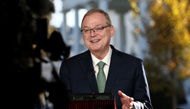


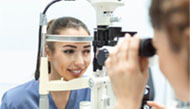












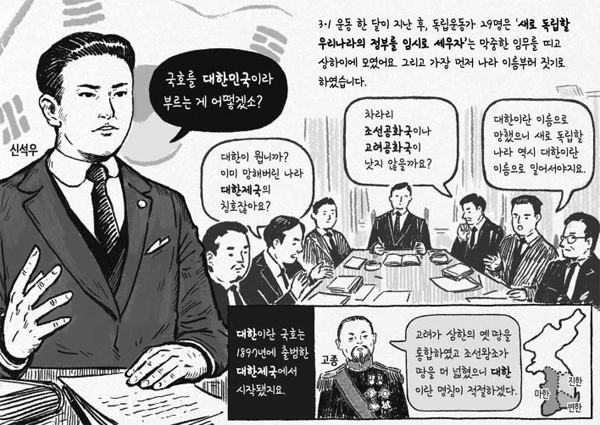





.png)


댓글 안에 당신의 성숙함도 담아 주세요.
'오늘의 한마디'는 기사에 대하여 자신의 생각을 말하고 남의 생각을 들으며 서로 다양한 의견을 나누는 공간입니다. 그러나 간혹 불건전한 내용을 올리시는 분들이 계셔서 건전한 인터넷문화 정착을 위해 아래와 같은 운영원칙을 적용합니다.
자체 모니터링을 통해 아래에 해당하는 내용이 포함된 댓글이 발견되면 예고없이 삭제 조치를 하겠습니다.
불건전한 댓글을 올리거나, 이름에 비속어 및 상대방의 불쾌감을 주는 단어를 사용, 유명인 또는 특정 일반인을 사칭하는 경우 이용에 대한 차단 제재를 받을 수 있습니다. 차단될 경우, 일주일간 댓글을 달수 없게 됩니다.
명예훼손, 개인정보 유출, 욕설 등 법률에 위반되는 댓글은 관계 법령에 의거 민형사상 처벌을 받을 수 있으니 이용에 주의를 부탁드립니다.
Close
x